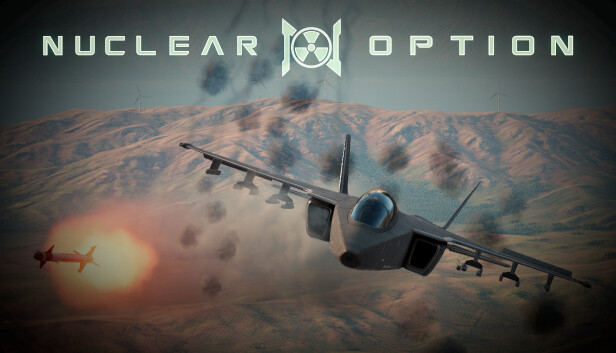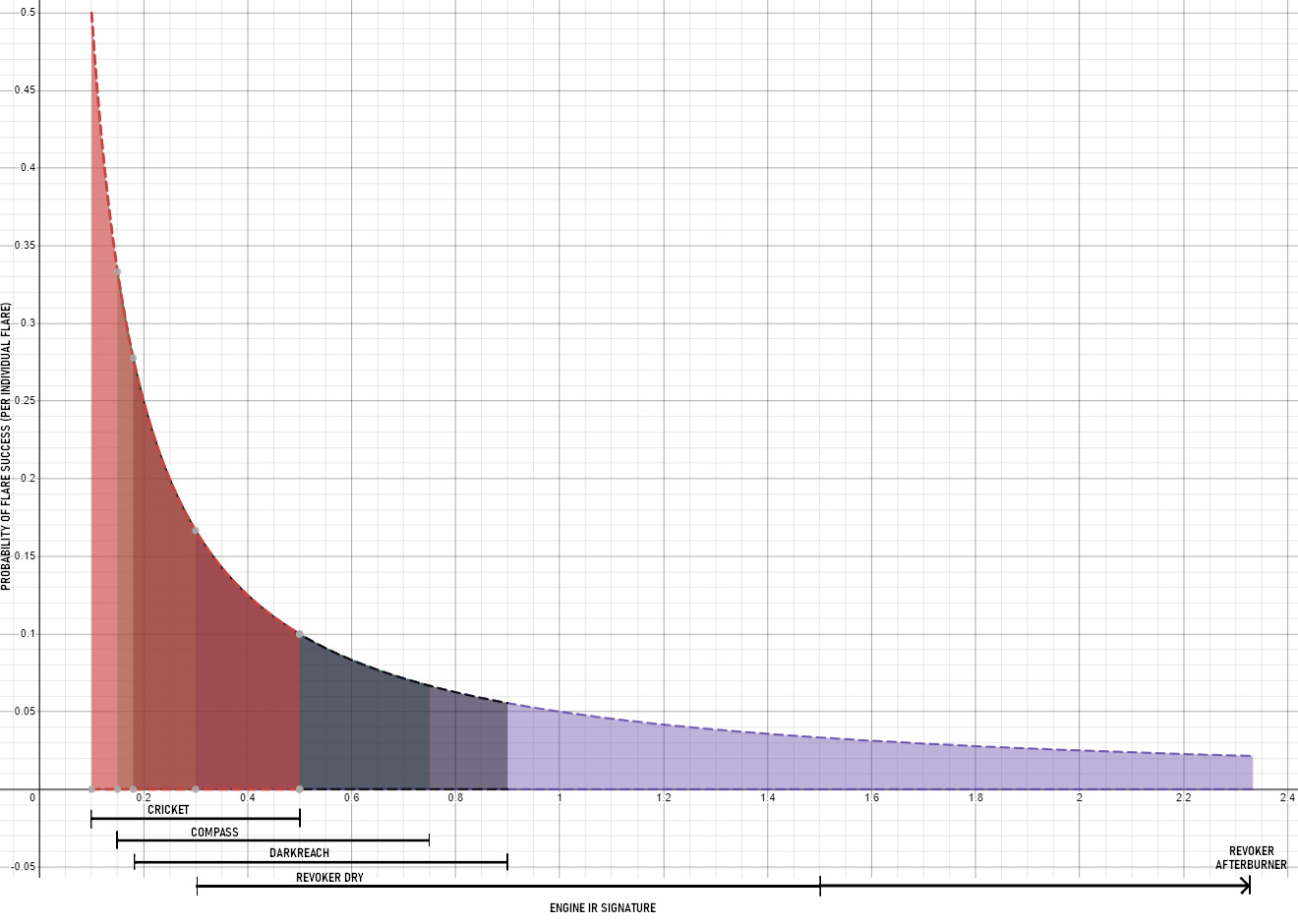This guide will show you how to easily defeat and counter any incoming missiles that will be targeting you in Nuclear Options game.
Incoming Missiles Warning
You’re in a tricky situation with a missile chasing you. On your screen, in the bottom left corner, just above the map, you’ll see a list. This list shows all the missiles that are after you. They’re like flashing yellow and red arrows on the map, or they might look like flashing missile icons on your screen.
Ahora, here’s the important part. All these missiles have something in common – they don’t like terrain. Terrain means the ground and the landscape around you. If you stick close to the ground and use the natural features, like mountains and hills, you’ll have a better chance of staying safe.
Another thing to know is that these missiles don’t get along with each other. If you’re really fast and have another missile with you, you can try shooting down the missile that’s coming after you. pero ten cuidado, this is a costly way to deal with them, and it’s not the best choice unless you don’t have any other options.
The missiles come in different types, and they each have a way of finding you. Esto es lo que necesitas saber:
- Óptico [Óptico]
- Infrared [IR]
- Semi-active Radar Homing [SARH]
- Active Radar Homing [ARH]
How to Counter [Óptico] misiles.
Optical missiles are designed for ground targets. They don’t track the target or steer very well. If one is fired at you, it means the enemy is mocking your piloting skills.
These missiles typically head straight toward their target’s location without considering its speed. They are a threat when launched from directly in front or behind at a very short distance. Any aircraft can easily outmaneuver an optical missile, although AGM-68s are effective against them when fired from behind. These missiles are almost certain to miss when trying to hit a target flying sideways.
To avoid getting hit by an optical missile, you can’t break the lock except by blocking the missile’s line of sight. Simply turn your aircraft so it’s coming at you from the side, and it will miss. If you’re not sure, make a sudden maneuver to ensure it doesn’t hit you.
How to Counter [IR] misiles
Breaking an IR missile lock can be done by using flares to divert its attention or taking cover behind terrain to hide from the missile. Sin embargo, dealing with an MMR-S3 missile (found on most aircraft) is particularly challenging as it’s a formidable device capable of extreme 40g turns, making it hard to escape if it maintains its lock.
Here’s how to handle the situation:
- Preemptive Flaring: Even before you get locked onto, start deploying flares at a steady rate, about one every second or half-second. This technique, known as pre-flaring, is highly effective and can disrupt the missile’s lock right at the moment of launch.
- Lock Break Procedure: If you find yourself locked onto by an IR missile, immediately reduce your throttle to zero and let your engine spool down. Continue popping flares at a rate of one every half-second until the lock is broken. Depending on the circumstances, consider turning away from the missile to buy more time to break the lock.
- Increasing Flare Rate: In the rare event that the lock persists, increase the rate at which you release flares, almost mashing the flare button just before the missile is about to strike. Simultáneamente, make sharp evasive maneuvers in any direction, hoping the missile detonates away from your path.
It’s essential to note that a missile fired directly toward you may still hit even if you employed flares if you didn’t maneuver to evade it effectively.
How Flares Work:
When an IR missile is launched, it randomly decides whether to lock onto the intended target or any flares within a 100-meter radius of the target. The probability of the missile homing in on a flare increases as more flares are present in that radius. This method is much more effective than attempting to break an active lock, so it’s advisable to start deploying flares proactively if you anticipate being targeted.
While the missile is tracking a target, releasing a flare triggers another random decision: whether the missile continues pursuing its target or switches to chase the flare. The success of the flare’s diversion depends on the current engine thrust (calor) and the number of flares already in the vicinity of the target. The missile’s aspect (position relative to the target) isn’t taken into account.
Además, deploying flares introduces some unpredictability into the missile’s detonation timing. If the missile is about to strike and is surrounded by flares, it might explode slightly outside its lethal range.
How to Counter [SARH] misiles
Semi-active radar homing (SARH) is used by SAM (Surface-to-Air Missile) sites and some mobile SAM launchers. This means there’s a radar system separate from the missile that detects the target and guides the missile toward it. When you’re under the watchful eye of a radar, you’ll notice an orange bar on your map indicating the radar’s direction, accompanied by a periodic beeping sound. Although all radar signals look the same on the map, the guidance radar is specific to the launching platform, meaning the missiles can only be guided by that particular radar.
In Nuclear Option, radar works with four limitations:
- Line of Sight: Radar can’t see through mountains or buildings.
- Maximum Range: Radar has a limited range, typically between 10 a 40 kilometers, depending on its type.
- Notch Angle: Objects moving perpendicular to the radar’s signal might become invisible due to lacking a Doppler shift.
- Ground Clutter: Objects closer than 20 meters above the ground are invisible to radar.
Dodging a SARH missile is relatively straightforward—avoid the radar signal. Using terrain for cover is more convenient with SARH missiles because you only need to break the line of sight between you and the radar, causing the missiles to stop tracking. Once the missiles lose tracking, they cannot reacquire it, even if the radar locks onto you again. To resume the attack, the launching platform would need to fire new missiles.
If you’re flying too high to utilize terrain for cover, you should turn and «notch,» preferably while descending toward the terrain. Notching involves flying perpendicular to the radar, positioning it directly at your 9 o’clock or 3 o’clock to minimize its effectiveness.
How the Jammer Works:
Jammers are available on the Compass, Revoker, and Darkreach. The Darkreach’s jammer is particularly powerful. These jammers reduce the radar’s effectiveness, specifically by increasing both the notch angle and the height at which ground clutter interferes with the radar. Como resultado, radar-guided missiles become slightly less accurate. Sin embargo, using the jammer alone is not sufficient to completely thwart them. To break a lock, you must combine jamming with notching or flying at lower altitudes. If you run out of time to notch, jamming while executing a last-second evasive maneuver might make the missile detonate outside its lethal range.
How to Counter [ARH] misiles
Active radar homing (ARH) missiles operate similarly to semi-active radar homing (SARH) misiles, but with a significant difference: the radar system is inside the missile itself, combining the advantages of previous missile types. This makes ARH missiles extremely dangerous.
The Scythe, which currently uses ARH technology, has a radar range of 10 kilometers. Beyond this range, it relies on datalink guidance. To escape an ARH missile during the datalink phase, you must sever the connection between the missile and whatever is providing your target’s information to the enemy. This source could be other military units, the enemy plane’s radar, or even your own radar if it’s switched on. Si, by the time the Scythe enters radar range and its target is not within 1 kilometer of its expected position, it loses its lock and can’t reacquire it.
Once the Scythe enters radar range, it will appear as a radar contact on your map, marked with the same orange line as other radar systems. To evade the missile, you need to follow the same tactics as you would with other radar-guided missiles. Attempting to outmaneuver ARH missiles, like S3 missiles, is generally an ineffective strategy.
Eso es todo lo que estamos compartiendo hoy para este Opción nuclear guía. Esta guía fue originalmente creada y escrita por Squeegy Mackoy. En caso de que no actualicemos esta guía, puede encontrar la última actualización siguiendo este enlace.


to defeat the new ARAD missles you gotta de-activate the Radar